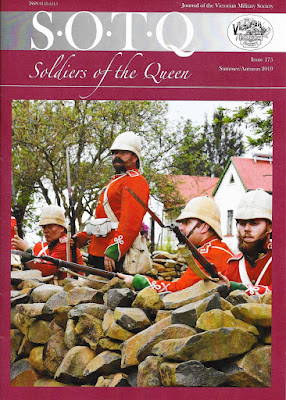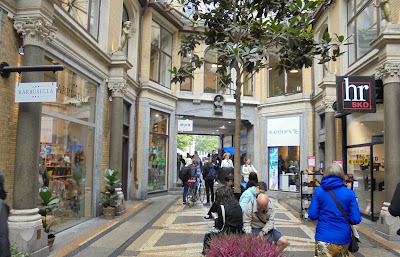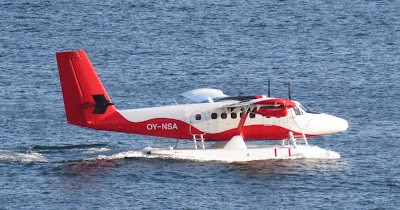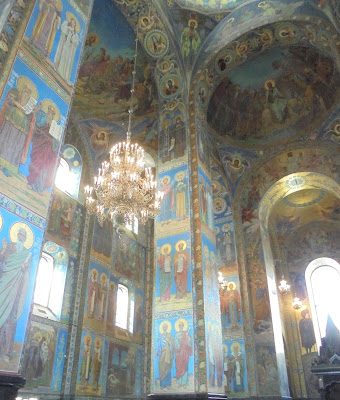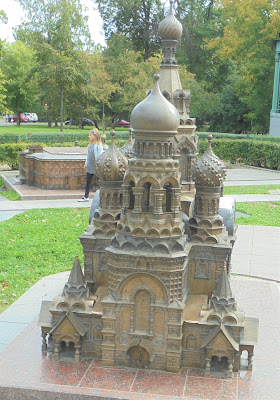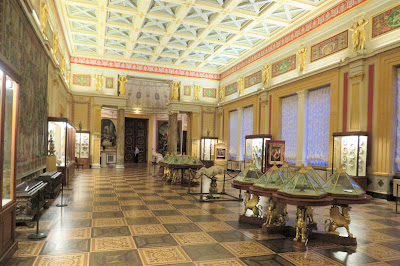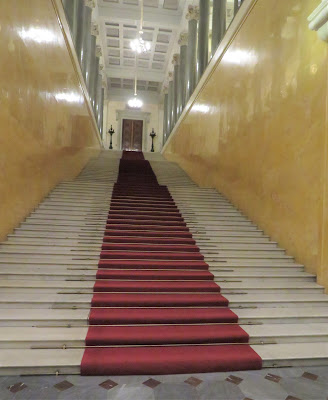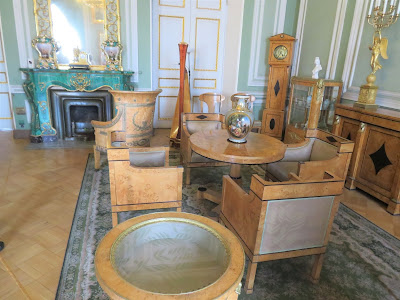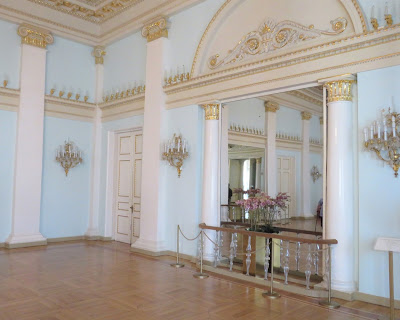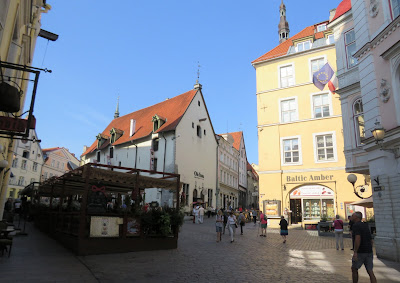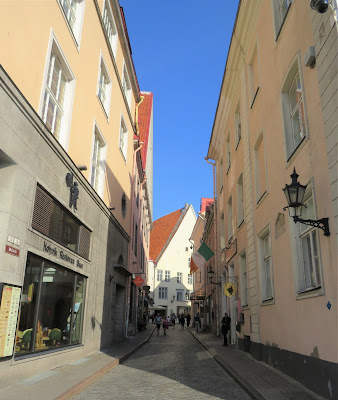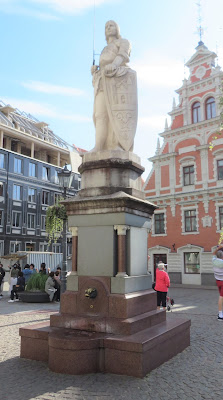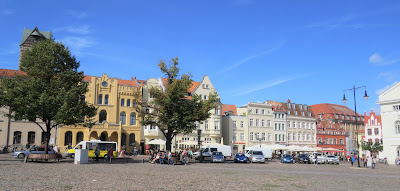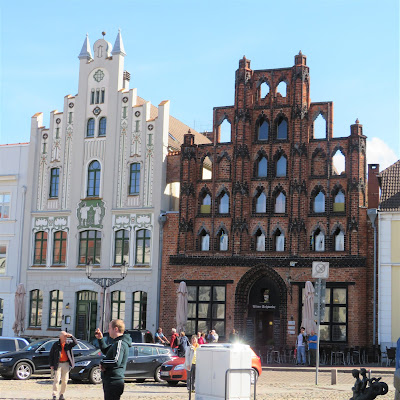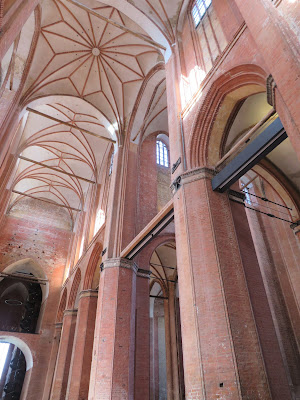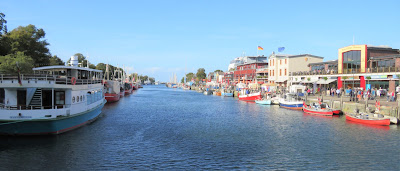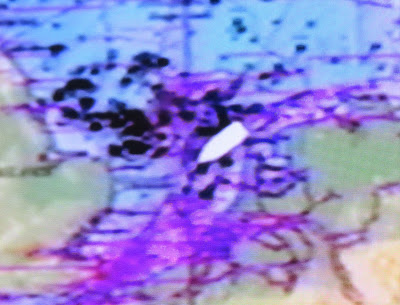Over the weekend I did some revision work on the second version of my terrain generator, and I now feel confident enough to share it with my regular blog readers.
I have made quite a few changes which I hope will make the terrain generator easier to use and extend its usefulness somewhat. These changes include:
When two opposing forces arrive in the same campaign grid area and prepare to fight, they will need to have some sort of terrain to fight over. This terrain generator will hopefully produce a viable terrain map that can be duplicated on the tabletop.
1: HILLS AND MOUNTAINS
The campaign grid square should give some indication as to whether there are any hills and mountains on the battlefield. (It is worth noting that there are relatively few battlefields that are totally flat and where there is no higher ground.) If there are any hills and mountains, then start here. If not, then move on to 2: RIVERS AND BODIES OF WATER.
Each hill or mountain occupies 1 grid area.
1.1: How many hills or mountains?
Unless the number and type of hills and mountains there are on the battlefield is obvious, this can be determined by throwing a D6 die. Unless otherwise determined by the rules, hills are one contour high and mountains are not climbable.
Open/Flat Terrain
The location of the first hill is be determined by:
If the counting along and down reaches the bottom right-hand grid area of the grid, the counting loops up to the top of the grid and the continues from the top left-hand grid area of the grid.
If there is already a hill in the grid area, the new hill is located in the next unoccupied grid area.
Once all the hills have been located in Hilly or Mountainous Terrain, the relevant additional dice throws take place to see if the hills are two contours high or are mountains.
1.3: Contiguous hills and mountains
It is normal for hills or mountains to form chains or ridges, and the following rules have been included so that players who wish to have a series of linked or contiguous grid areas that contain hills or mountains can do so.
When a hill has been located using the method outlined above, a second D6 die is thrown to determine if another hill will be located in an adjacent grid area.
If the second D6 die score is 1, 2, or 3, then the next hill will not be located in an adjacent grid area to the first, and the method outlined in 1.2: Locating hills and mountains is used to locate the next hill.
If the second D6 die score is 4, 5, or 6, then the next hill to be located will be in an adjacent grid area to the first. To determine which adjacent grid are the second hill is located in, another D6 die is thrown.
If the grid is a squared grid and the D6 dies score is 5 or 6, the D6 die must be thrown again. Only a D6 die score of 1, 2, 3, or 4 can be used to determine which adjacent grid square the next hill will be located in. (See relevant diagram)
If the grid is a hexed grid, the D6 die score determines which adjacent grid hex the next hill will be located in. (See relevant diagram)
If there is already a hill in the grid area, the additional hill is located in the next unoccupied grid area going clockwise.
This method is repeated for the second hill to see if a third hill is located in an adjacent grid area to the second hill … and so on until either the D6 die score determines that no further hills will be added to the chain or ridge or there are no more hills to be located.
Once all the hills have been located in Hilly or Mountainous Terrain, the relevant additional dice throws take place to see if the hills are two contours high or are mountains.
2: RIVERS AND BODIES OF WATER
The campaign grid square should give some indication as to whether there is a river on the battlefield. If there is a river, then start here. If not, then move on to 3: ROADS AND TRACKS.
Each section of a river occupies 1 grid area.
2.1: Direction of rivers
Unless the direction the river is passing through the battlefield is obvious, its entry and exit positions can be determined by throwing a D6 die twice. The first throw determines the river’s entry point and the second throw determines its exit point.
The first D6 die score is read starting from 1 in the top left-hand corner of the grid, going clockwise (i.e. 1, 2, 3, 4, 5, and 6). The second D6 die score is read starting from the location determined by the first D6 die score, continuing clockwise.
For example, clockwise from 1 in the top left-hand corner of the grid, a D6 die score of 3 means that the river will enter the grid in the third quarter on the top edge the grid. A second D6 die score of 5 means that the river will exit the grid in the second quarter on the left-hand side of the grid, thus:
Rivers will take the most direct route from their entry point to their exit point, going around any hills and mountains that have already been located on the tabletop.
As a quarter might contain more than one grid area, the precise entry and exit points can be determined either by throwing a D6 die for each grid area that does not already contain a hill or mountain and the grid area with the highest D6 die score being the entry or exit point, or by mutual agreement between the players.
2.2: Width of rivers
Unless the width of the river is passing through the battlefield is obvious, its width can be determined by throwing a D6 die.
In some regions of the world there are many lakes. If the campaign is taking place in such a region and unless the number of lakes there are on the battlefield is obvious, the number of lakes can be determined by throwing a D6 die.
The method used to locate lakes is the same as that used to locate hills and mountains. See 1.2: Locating hills and mountains and 1.3: Contiguous hills and mountains above.
2.4: Marshes and swamps
In some regions of the world there are many marshes and swamps. If the campaign is taking place in such a region and unless the number of marshes or swamps there are on the battlefield is obvious, the number of marshes or swamps can be determined by throwing a D6 die.
The method used to locate marshes or swamps is the same as that used to locate hills and mountains. See 1.2: Locating hills and mountains and 1.3: Contiguous hills and mountains above.
3: ROADS AND TRACKS
The campaign grid square should give some indication as to whether there is a road or track on the battlefield. If there is a road or track, then start here. If not, then move on to 4: TREES, WOODS, AND FORESTS.
The type of road or track will depend upon the geography the area the campaign is being fought over.
Unless the direction the road or track is passing through the battlefield is very obvious, its entry and exit positions can be determined by throwing a D6 die twice (the first throw for the entry point and the second throw for the exit point) in exactly the same as the direction of a river is determined in 2: RIVERS.
Roads and tracks will take the most direct route from their entry point to their exit point, going around any hills and mountains that have already been located on the tabletop.
3.2: Width of roads and tracks
All roads or tracks are deemed to be no wider than a single grid area.
3.3: Roads and tracks crossing rivers
If a road or track crosses a river, it will do so by either a bridge or a ford. This can be determined by throwing a D6 die.
If a road or track does not pass next to a village or town after they have been located on the terrain map, an additional stretch of road or track made be added to connect the village or town to any existing road or track. The road or track must take the most direct route from the village or town to the existing road or track.
4: TREES, WOODS, AND FORESTS
The campaign grid square should give some indication as to whether there are any trees, woods, or forests on the battlefield. (It is worth noting that there are relatively few battlefields where there are no trees.) If there are some trees, then start here. If not, then move on to 5: HABITATION.
The type of tree (e.g. palm trees, coniferous/evergreen trees, and deciduous trees) will depend upon the geography and climate of the area the campaign is being fought over.
Unless the number of trees there are on the battlefield is obvious, this can be determined by throwing a D6 die and the results read from the relevant terrain type table.
Desert Terrain
4.2: Locating trees
The method used to locate trees is the same as that used to locate hills and mountains. See 1.2: Locating hills and mountains and 1.3: Contiguous hills and mountains above.
Groups of trees can be placed on hills, but not on any other terrain feature.
5: HABITATION
The campaign grid square should give some indication as to whether there are inhabited places on the battlefield. If there are, then start here. If not, then move on to 6: RAILWAYS.
They density and number of inhabited places will depend upon the geography of the area the campaign is being fought over:
Unless the number and size of inhabited places that are on the battlefield is obvious, this can be determined by throwing a D6 die and the results read from the relevant terrain area table.
Desert, Mountainous, and Forested areas
The method used to locate inhabited places is the same as that used to locate hills and mountains. See 1.2: Locating hills and mountains and 1.3: Contiguous hills and mountains above.
If there is already something in a grid area, the inhabited grid area is located in the next unoccupied grid area. This is subject to the exception that settlements can be placed on hills that do not have trees on them.
6: RAILWAYS
After the Industrial Revolution, railways were built all over the world. As such, they became major routes for armies to follow as they made supplying the needs of the army much easier.
The campaign grid square should give some indication as to whether there is a railway on the battlefield. If there is a railway, then start here. If not, then move on to 7: FIELDS.
6.1: Direction of railway tracks
Unless the direction the railway track is passing through the battlefield is very obvious, its entry and exit positions can be determined by throwing a D6 die twice (the first throw for the entry point and the second throw for the exit point) in exactly the same as the direction of a river is determined in 2: RIVERS AND BODIES OF WATER.
Railway tracks will take the most direct route from their entry point to their exit point, going around any hills and mountains that have already been located on the tabletop. They may, however, divert from the most direct route in order to pass next to or through a village or town.
6.2: Railway tracks crossing rivers
If a railway track crosses a river, it will do so using a bridge.
6.3: Railway tracks crossing roads or tracks
If a railway track crosses a road or track, it will do so using a level crossing.
7: FIELDS
Fields are found in cultivated and rural areas, and usually near habitation.
The campaign grid square should give some indication as to whether there are any fields on the battlefield. (It is worth noting that there are relatively few battlefields in cultivated or rural areas where there are no fields.) If there are any fields, then start here. If not, then your terrain map should now be complete.
7.1: How many fields?
Unless the number of fields there are on the battlefield is obvious, this can be determined by throwing a D6 die and the results read from the relevant terrain area table.
Cultivated and Rural areas
7.2: Locating fields
Because fields are associated with habitation in cultivated and rural areas, they should – wherever possible – be located adjacent to a settlement or village. In other words, they should be regarded as contiguous with the settlement or village.
If there are an insufficient number of fields for each settlement or village to be allocated a field, the fields should be allocated randomly by throwing a D6 die, with a D6 die being thrown for each settlement or village and the fields allocated in order of D6 die score, highest score first. Any tied scores are thrown again. Once the fields have been allocated to a settlement or village, they are located using a D6 die and the method used to locate contiguous hills and mountains. See 1.3: Locating contiguous hills and mountains above.
If there are enough fields for each settlement or village to be allocated one each, this should be done by throwing a D6 die and the method used to locate contiguous hills and mountains. See 1.3: Locating contiguous hills and mountains above.
If there are more fields than there are settlements or villages, the additional unallocated fields are allocated randomly using the method outlined above.
7.3: Orchards, olive groves, and vineyards
In some regions of the world, fields may well be used as orchards, olive groves, or vineyards.
Whether or not a field is an orchard, olive grove, or vineyard can be determined by throwing a D6 die.
I have made quite a few changes which I hope will make the terrain generator easier to use and extend its usefulness somewhat. These changes include:
- Reordering the way in which each terrain type is generated so that hills and mountains now come first
- Trying to make the who process simpler
- Enabling the use of contiguous hills and mountains
- Enabling the use of contiguous areas of habitation
- Adding railways and fields
When two opposing forces arrive in the same campaign grid area and prepare to fight, they will need to have some sort of terrain to fight over. This terrain generator will hopefully produce a viable terrain map that can be duplicated on the tabletop.
1: HILLS AND MOUNTAINS
The campaign grid square should give some indication as to whether there are any hills and mountains on the battlefield. (It is worth noting that there are relatively few battlefields that are totally flat and where there is no higher ground.) If there are any hills and mountains, then start here. If not, then move on to 2: RIVERS AND BODIES OF WATER.
Each hill or mountain occupies 1 grid area.
1.1: How many hills or mountains?
Unless the number and type of hills and mountains there are on the battlefield is obvious, this can be determined by throwing a D6 die. Unless otherwise determined by the rules, hills are one contour high and mountains are not climbable.
Open/Flat Terrain
- D6 = number of hills (e.g. D6 die score = 3; therefore, there are 3 hills)
- D6 + 2 = number of hills (e.g. D6 die score = 4; therefore, there are 6 hills)
- Throw an additional D6 die for each hill.
- If the additional D6 die score for a hill = 5 or 6, the hill is two contours high.
- D6 + 4 = number of hills (e.g. D6 die score = 2; therefore, there are 6 hills)
- Throw an additional D6 die for each hill once it has been located.
- If the additional D6 die score for a hill = 5 or 6, the hill is two contours high.
- D6 + 6 = number of hills and mountains (e.g. D6 die score = 5; therefore, there are 11 hills and mountains)
- Throw an additional D6 die for each hill once it has been located.
- If the additional D6 die score for a hill = 3 or 4, the hill is two contours high.
- If the additional D6 die score for a hill = 5 or 6, the hill becomes a mountain.
The location of the first hill is be determined by:
- throwing a D6 die to identify the starting point on the left-hand side of the grid which will in turn determine where the first hill is located and
- three D6 dice being thrown and their scores totalled to determine how many grid areas along that row from the starting point the hill will be located, counting along the row and then down and onto the second row if necessary.
Counting along a row and down to the next row on an 8 x 8 square grid.
The second hill is located 3D6 grid areas from the first hill, counting along the row and then down and onto the second row if necessary, as before. The third hill is located 3D6 grid areas from the second hill, and this use of totalled 3D6 dices scores continues until all the hills have been located.Counting along a row and down to the next row on a 9 x 8 hexed grid.
If the counting along and down reaches the bottom right-hand grid area of the grid, the counting loops up to the top of the grid and the continues from the top left-hand grid area of the grid.
If there is already a hill in the grid area, the new hill is located in the next unoccupied grid area.
Once all the hills have been located in Hilly or Mountainous Terrain, the relevant additional dice throws take place to see if the hills are two contours high or are mountains.
1.3: Contiguous hills and mountains
It is normal for hills or mountains to form chains or ridges, and the following rules have been included so that players who wish to have a series of linked or contiguous grid areas that contain hills or mountains can do so.
When a hill has been located using the method outlined above, a second D6 die is thrown to determine if another hill will be located in an adjacent grid area.
If the second D6 die score is 1, 2, or 3, then the next hill will not be located in an adjacent grid area to the first, and the method outlined in 1.2: Locating hills and mountains is used to locate the next hill.
If the second D6 die score is 4, 5, or 6, then the next hill to be located will be in an adjacent grid area to the first. To determine which adjacent grid are the second hill is located in, another D6 die is thrown.
If the grid is a squared grid and the D6 dies score is 5 or 6, the D6 die must be thrown again. Only a D6 die score of 1, 2, 3, or 4 can be used to determine which adjacent grid square the next hill will be located in. (See relevant diagram)
If the grid is a hexed grid, the D6 die score determines which adjacent grid hex the next hill will be located in. (See relevant diagram)
If there is already a hill in the grid area, the additional hill is located in the next unoccupied grid area going clockwise.
This method is repeated for the second hill to see if a third hill is located in an adjacent grid area to the second hill … and so on until either the D6 die score determines that no further hills will be added to the chain or ridge or there are no more hills to be located.
Once all the hills have been located in Hilly or Mountainous Terrain, the relevant additional dice throws take place to see if the hills are two contours high or are mountains.
2: RIVERS AND BODIES OF WATER
The campaign grid square should give some indication as to whether there is a river on the battlefield. If there is a river, then start here. If not, then move on to 3: ROADS AND TRACKS.
Each section of a river occupies 1 grid area.
2.1: Direction of rivers
Unless the direction the river is passing through the battlefield is obvious, its entry and exit positions can be determined by throwing a D6 die twice. The first throw determines the river’s entry point and the second throw determines its exit point.
The first D6 die score is read starting from 1 in the top left-hand corner of the grid, going clockwise (i.e. 1, 2, 3, 4, 5, and 6). The second D6 die score is read starting from the location determined by the first D6 die score, continuing clockwise.
For example, clockwise from 1 in the top left-hand corner of the grid, a D6 die score of 3 means that the river will enter the grid in the third quarter on the top edge the grid. A second D6 die score of 5 means that the river will exit the grid in the second quarter on the left-hand side of the grid, thus:
Rivers will take the most direct route from their entry point to their exit point, going around any hills and mountains that have already been located on the tabletop.
As a quarter might contain more than one grid area, the precise entry and exit points can be determined either by throwing a D6 die for each grid area that does not already contain a hill or mountain and the grid area with the highest D6 die score being the entry or exit point, or by mutual agreement between the players.
2.2: Width of rivers
Unless the width of the river is passing through the battlefield is obvious, its width can be determined by throwing a D6 die.
- D6 die score is 1, 2, 3, or 4 = the width of the river is one grid area.
- D6 die score is 5 or 6 = the width of the river is two grid areas.
In some regions of the world there are many lakes. If the campaign is taking place in such a region and unless the number of lakes there are on the battlefield is obvious, the number of lakes can be determined by throwing a D6 die.
- D6 = number of lakes (e.g. D6 die score = 5; therefore, there are 5 lakes)
The method used to locate lakes is the same as that used to locate hills and mountains. See 1.2: Locating hills and mountains and 1.3: Contiguous hills and mountains above.
2.4: Marshes and swamps
In some regions of the world there are many marshes and swamps. If the campaign is taking place in such a region and unless the number of marshes or swamps there are on the battlefield is obvious, the number of marshes or swamps can be determined by throwing a D6 die.
- D6 = number of marshes or swamps (e.g. D6 die score = 2; therefore, there are 2 marshes or swamps)
The method used to locate marshes or swamps is the same as that used to locate hills and mountains. See 1.2: Locating hills and mountains and 1.3: Contiguous hills and mountains above.
3: ROADS AND TRACKS
The campaign grid square should give some indication as to whether there is a road or track on the battlefield. If there is a road or track, then start here. If not, then move on to 4: TREES, WOODS, AND FORESTS.
The type of road or track will depend upon the geography the area the campaign is being fought over.
- Roads: Usually metalled (i.e. having a hard, weather-proof surface made from stone or tarmacadam), roads are found in areas where there tends to be more habitation or on strategic routes.
- Tracks: Usually unmetalled (i.e. having a surface made from compacted earth), tracks are found in almost all areas.
Unless the direction the road or track is passing through the battlefield is very obvious, its entry and exit positions can be determined by throwing a D6 die twice (the first throw for the entry point and the second throw for the exit point) in exactly the same as the direction of a river is determined in 2: RIVERS.
Roads and tracks will take the most direct route from their entry point to their exit point, going around any hills and mountains that have already been located on the tabletop.
3.2: Width of roads and tracks
All roads or tracks are deemed to be no wider than a single grid area.
3.3: Roads and tracks crossing rivers
If a road or track crosses a river, it will do so by either a bridge or a ford. This can be determined by throwing a D6 die.
- D6 die score is 1, 2, 3, or 4 = the river crossing is a ford.
- D6 die score is 5 or 6 = the river crossing is a bridge.
If a road or track does not pass next to a village or town after they have been located on the terrain map, an additional stretch of road or track made be added to connect the village or town to any existing road or track. The road or track must take the most direct route from the village or town to the existing road or track.
4: TREES, WOODS, AND FORESTS
The campaign grid square should give some indication as to whether there are any trees, woods, or forests on the battlefield. (It is worth noting that there are relatively few battlefields where there are no trees.) If there are some trees, then start here. If not, then move on to 5: HABITATION.
The type of tree (e.g. palm trees, coniferous/evergreen trees, and deciduous trees) will depend upon the geography and climate of the area the campaign is being fought over.
- Palm trees: Usually found in tropical, subtropical, warm temperate, and hot climates.
- Coniferous/evergreen trees: Usually found in areas where there are cool or cold winters and warm summers, with well-defined seasons and at least four to six frost-free months.
- Deciduous trees: Usually found in temperate regions where there are cold winters and warm summers, or subtropical and tropical regions where temperatures do not differ greatly throughout the year, but where there is a pattern of seasonal heavy rainfall and periods of drought.
Unless the number of trees there are on the battlefield is obvious, this can be determined by throwing a D6 die and the results read from the relevant terrain type table.
Desert Terrain
- D6 – 2 = number of groups of trees (e.g. D6 die score = 3; therefore, there is 1 group of trees)
- D6 = number of groups of trees (e.g. D6 die score = 4; therefore, there are 4 groups of trees)
- D6 + 2 = number of groups of trees (e.g. D6 die score = 6; therefore, there are 8 groups of trees)
- D6 + 3 = number of groups of trees (e.g. D6 die score = 2; therefore, there are 5 groups of trees)
- D6 + 4 = number of groups of trees (e.g. D6 die score = 4; therefore, there are 8 groups of trees)
4.2: Locating trees
The method used to locate trees is the same as that used to locate hills and mountains. See 1.2: Locating hills and mountains and 1.3: Contiguous hills and mountains above.
Groups of trees can be placed on hills, but not on any other terrain feature.
5: HABITATION
The campaign grid square should give some indication as to whether there are inhabited places on the battlefield. If there are, then start here. If not, then move on to 6: RAILWAYS.
They density and number of inhabited places will depend upon the geography of the area the campaign is being fought over:
- Desert, Mountainous, and Forested areas: These areas have few if any inhabited places, and those that do exist tend to be small.
- Cultivated and Rural areas: These areas tend to have several small inhabited places that are spread out, although there may be occasional villages or small towns.
- Urban areas: These areas have significant inhabited places, some of which may be large.
- Settlements can be single dwellings, small farms, or hamlets. They occupy a grid area.
- Villages comprise several dwellings, and often include places where trade takes place (e.g. shops and markets) and one or more places of worship. They occupy two contiguous grid areas.
- Towns comprise a significant number of dwellings and other buildings, including places where trade takes place, the location of local administration (e.g. town hall), and one or more places of worship. A town will occupy three or more contiguous grid areas.
- Cities comprise a very significant number of dwellings and other buildings, including places where industry and trade takes place, the location of regional or national administration (e.g. city hall), and several places of worship. A city will occupy five or more contiguous grid areas.
Unless the number and size of inhabited places that are on the battlefield is obvious, this can be determined by throwing a D6 die and the results read from the relevant terrain area table.
Desert, Mountainous, and Forested areas
- D6 – 3 = number of inhabited grid areas (e.g. D6 die score = 3; therefore, there is no habitation)
- D6 = number of inhabited grid areas (e.g. D6 die score = 4; therefore, there are 4 inhabited grid areas)
- D6 + 2 = number of inhabited grid areas (e.g. D6 die score = 6; therefore, there are 8 inhabited grid areas)
The method used to locate inhabited places is the same as that used to locate hills and mountains. See 1.2: Locating hills and mountains and 1.3: Contiguous hills and mountains above.
If there is already something in a grid area, the inhabited grid area is located in the next unoccupied grid area. This is subject to the exception that settlements can be placed on hills that do not have trees on them.
6: RAILWAYS
After the Industrial Revolution, railways were built all over the world. As such, they became major routes for armies to follow as they made supplying the needs of the army much easier.
The campaign grid square should give some indication as to whether there is a railway on the battlefield. If there is a railway, then start here. If not, then move on to 7: FIELDS.
6.1: Direction of railway tracks
Unless the direction the railway track is passing through the battlefield is very obvious, its entry and exit positions can be determined by throwing a D6 die twice (the first throw for the entry point and the second throw for the exit point) in exactly the same as the direction of a river is determined in 2: RIVERS AND BODIES OF WATER.
Railway tracks will take the most direct route from their entry point to their exit point, going around any hills and mountains that have already been located on the tabletop. They may, however, divert from the most direct route in order to pass next to or through a village or town.
6.2: Railway tracks crossing rivers
If a railway track crosses a river, it will do so using a bridge.
6.3: Railway tracks crossing roads or tracks
If a railway track crosses a road or track, it will do so using a level crossing.
7: FIELDS
Fields are found in cultivated and rural areas, and usually near habitation.
The campaign grid square should give some indication as to whether there are any fields on the battlefield. (It is worth noting that there are relatively few battlefields in cultivated or rural areas where there are no fields.) If there are any fields, then start here. If not, then your terrain map should now be complete.
7.1: How many fields?
Unless the number of fields there are on the battlefield is obvious, this can be determined by throwing a D6 die and the results read from the relevant terrain area table.
Cultivated and Rural areas
- D6 + 2 = number of fields (e.g. D6 die score = 4; therefore, there are 6 fields)
- D6 - 2 = number of fields (e.g. D6 die score = 3; therefore, there is 1 field)
7.2: Locating fields
Because fields are associated with habitation in cultivated and rural areas, they should – wherever possible – be located adjacent to a settlement or village. In other words, they should be regarded as contiguous with the settlement or village.
If there are an insufficient number of fields for each settlement or village to be allocated a field, the fields should be allocated randomly by throwing a D6 die, with a D6 die being thrown for each settlement or village and the fields allocated in order of D6 die score, highest score first. Any tied scores are thrown again. Once the fields have been allocated to a settlement or village, they are located using a D6 die and the method used to locate contiguous hills and mountains. See 1.3: Locating contiguous hills and mountains above.
If there are enough fields for each settlement or village to be allocated one each, this should be done by throwing a D6 die and the method used to locate contiguous hills and mountains. See 1.3: Locating contiguous hills and mountains above.
If there are more fields than there are settlements or villages, the additional unallocated fields are allocated randomly using the method outlined above.
7.3: Orchards, olive groves, and vineyards
In some regions of the world, fields may well be used as orchards, olive groves, or vineyards.
Whether or not a field is an orchard, olive grove, or vineyard can be determined by throwing a D6 die.
- D6 die score is 1, 2, or 3 = the field is an open field.
- D6 die score is 4, 5, or 6 = the field is an orchard, olive grove, or vineyard.
























